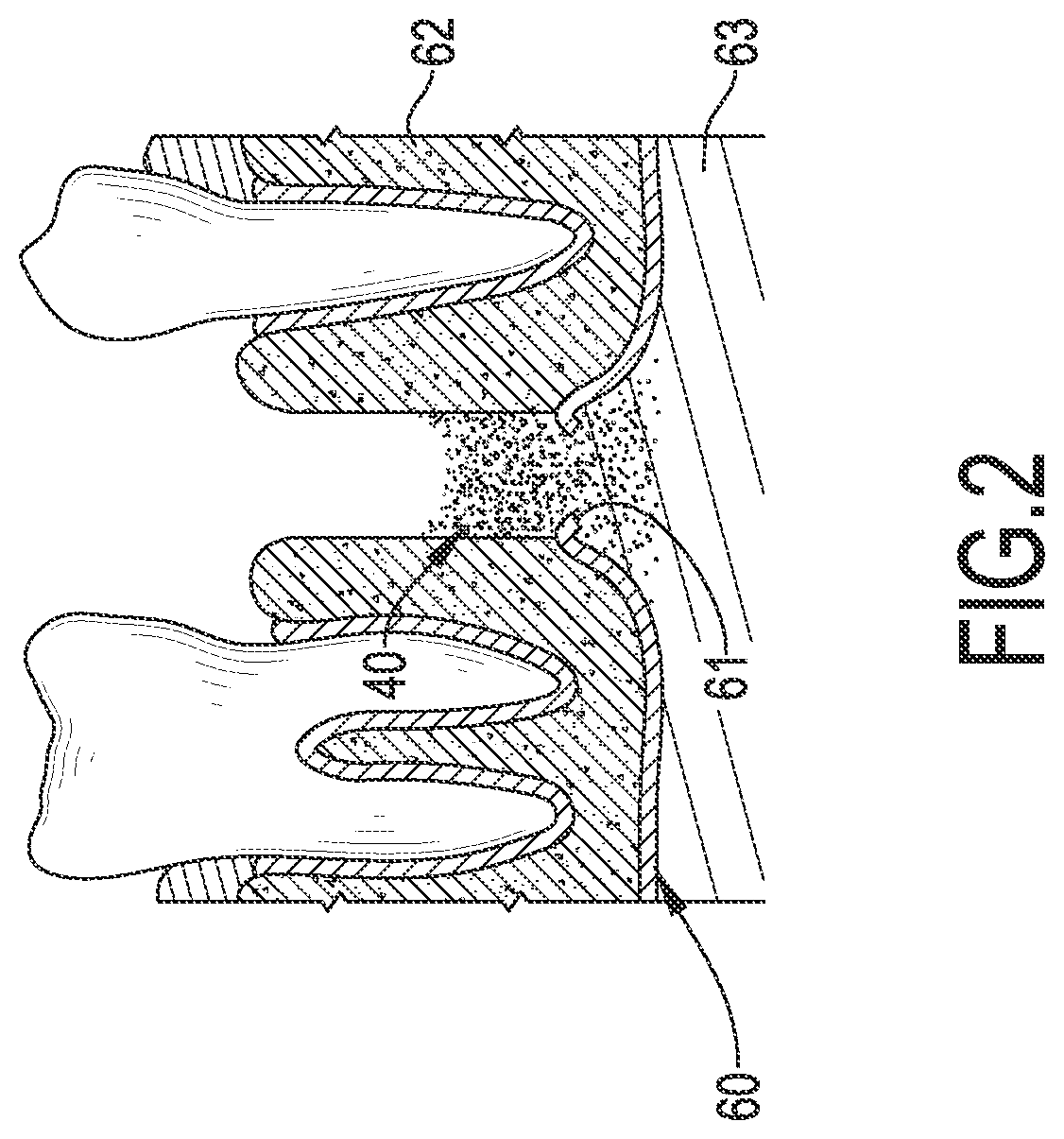Removing Device for Dentistry
- Summary
- Abstract
- Description
- Claims
- Application Information
AI Technical Summary
Benefits of technology
Problems solved by technology
Method used
Image
Examples
first embodiment
[0035]The present invention is a removing device for dentistry; with reference to FIG. 1, a removing device for dentistry in accordance with the present invention comprises a connecting pipe 10, a controller 20, and a sucking tube 30. Each of the connecting pipe 10 and the sucking tube 30 is made of a soft material, and an end of the connecting pipe 10 is connected to a hard water suction / high power suction 50 as shown in FIG. 3. The controller 20 is a hollow jacket and has two connecting portions 21a, 21b and an operating portion 22 disposed between the two connecting portions 21a, 21b. Furthermore, the two connecting portions 21a, 21b are respectively a first connecting portion 21a and a second connecting portion 21b, and the two connecting portions 21a, 21b are in fluid communication with each other via the operating portion 22. The first connecting portion 21a is connected to the connecting pipe 10, and the second connecting portion 21b is distal from the connecting pipe 10 and ...
third embodiment
[0039]With reference to FIGS. 8 and 9, when the removing device for dentistry of the present invention is in use, the connecting pipe 10 is connected to the water suction / high power suction 50 by the dentist, and the dentist can hold the controller 20 by one hand to move the sucking tube 30 at the patient's alveolar bone 62 or the other hand assists in moving the sucking tube 30 at the alveolar bone 62. With reference to FIG. 8, the dentist covers the relief hole 221 by fingers, so that the gas suction in the water suction / high power suction 50 can be transmitted to the sucking tube 30, and the bone graft 40 that enters the sinus cavity 63 can be sucked out through the sucking tube 30 to prevent the bone graft 40 from blocking the sinus opening of the maxillary sinus to generate infection and suppuration in the sinus cavity 63. Furthermore, during the operation of removing the bone graft 40, the dentist can separate the finger from or approach the relief hole 221 as shown in FIG. 9 ...
seventh embodiment
[0044]With reference to FIG. 17, when the removing device for dentistry of the present invention is in use, when the sucking tube 30 is moved deep into the patient's oral cavity to remove the bone graft 40, the predetermined drilling depth during dental implantation can be matched with a corresponding length of the sucking tube 30, and the length of the sucking tube 30 can be cut according to the reverse mark 312, so that when the dentist moves the sucking tube 30 into the alveolar bone 62 of the patient, the free end of the sucking tube 30 will not extend too much into the sinus cavity 63, but will be located at the hole 61 for removing the bone graft 40 that drops into the sinus cavity 63. While the sucking tube 30 is inserted, the prompt symbol 313 on the side of the reverse mark 312 can be used to remind the dentist that the free end of the sucking tube 30 is located in the hole 61. Therefore, the dentist can accurately remove the bone graft 40 located at the hole 61, and can pr...
PUM
 Login to View More
Login to View More Abstract
Description
Claims
Application Information
 Login to View More
Login to View More - R&D
- Intellectual Property
- Life Sciences
- Materials
- Tech Scout
- Unparalleled Data Quality
- Higher Quality Content
- 60% Fewer Hallucinations
Browse by: Latest US Patents, China's latest patents, Technical Efficacy Thesaurus, Application Domain, Technology Topic, Popular Technical Reports.
© 2025 PatSnap. All rights reserved.Legal|Privacy policy|Modern Slavery Act Transparency Statement|Sitemap|About US| Contact US: help@patsnap.com



